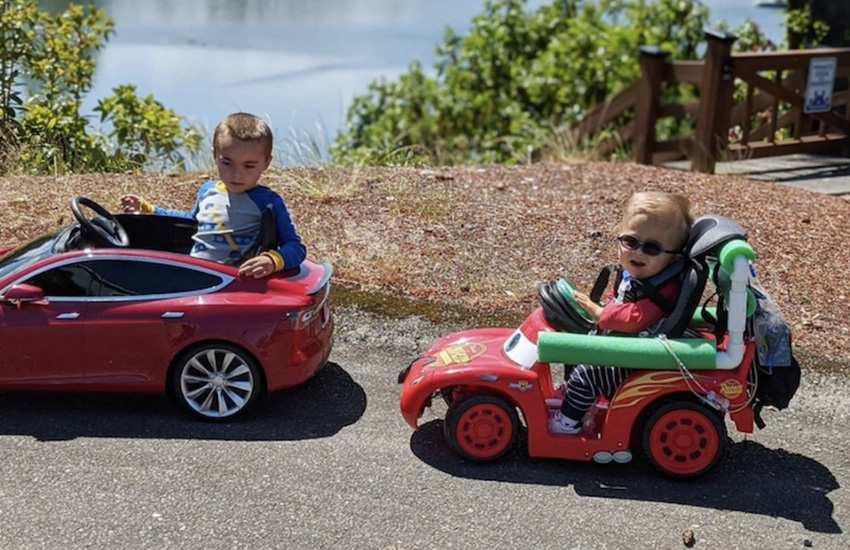Home / IHDD /

“Families can sometimes be uncertain about introducing powered mobility for their children in these early stages of development, but ride-on cars and other small devices designed for kids open up so many opportunities — from experiencing the joy of mobility, learning more about the world around them, enjoying social time with family and friends in new environments, and working on developmental skills.”
Heather Feldner, PT MPT Ph.D., CREATE
The UW School of Mechanical Engineering recently shared “Wheels in motion: Improving mobility technologies for children.” The article discusses a study on the impact of accessibility in the built environment on the usage of adapted ride-on cars for children with mobility issues. The research involved providing adapted ride-on cars to 14 families with young children in Western Washington and tracking their usage over a year. The adapted cars, equipped with features like large buttons or sip-and-puff devices instead of traditional foot pedals, aimed to offer an accessible alternative for children with mobility challenges. The study found that while most play sessions occurred indoors, outdoor usage was more prolonged, especially in pedestrian-friendly neighborhoods with accessible paths, emphasizing the importance of environmental accessibility for children’s mobility technology.

Photo: Assistant Professor Heather Feldner and Mechanical Engineering Grad Student Mia Hoffman standing in front of their Wheels in Motion poster board.
Lead researcher Heather Feldner, an assistant professor in the Department of Rehabilitation Medicine and IHDD Research Affiliate, highlighted the significance of introducing powered mobility devices early in a child’s development. The adapted ride-on cars were seen as a tool that not only provided mobility but also facilitated exploration critical for language, social, and physical development in children. The study aims to encourage families to embrace such assistive technologies, emphasizing their positive impact on a child’s ability to experience joy, learn about the world, and engage in social activities in different environments. The researchers advocate for continued efforts to ensure both technology designs and community environments are accessible for all children. Additionally, the article mentions ongoing research comparing children’s usage of commercial pediatric powered mobility devices to adapted ride-on cars, with a focus on promoting mobility for children with disabilities.
Read the full article: Wheels in motion: Improving mobility technologies for children
Read the study: Off to the park: a geospatial investigation of adapted ride-on car usage

Photo: Assistant Professor Heather Feldner and Mechanical Engineering Grad Student Mia Hoffman standing in front of their Wheels in Motion poster board.
Lead researcher Heather Feldner, an assistant professor in the Department of Rehabilitation Medicine and IHDD Research Affiliate, highlighted the significance of introducing powered mobility devices early in a child’s development. The adapted ride-on cars were seen as a tool that not only provided mobility but also facilitated exploration critical for language, social, and physical development in children. The study aims to encourage families to embrace such assistive technologies, emphasizing their positive impact on a child’s ability to experience joy, learn about the world, and engage in social activities in different environments. The researchers advocate for continued efforts to ensure both technology designs and community environments are accessible for all children. Additionally, the article mentions ongoing research comparing children’s usage of commercial pediatric powered mobility devices to adapted ride-on cars, with a focus on promoting mobility for children with disabilities.
Read the full article: Wheels in motion: Improving mobility technologies for children
Read the study: Off to the park: a geospatial investigation of adapted ride-on car usage


